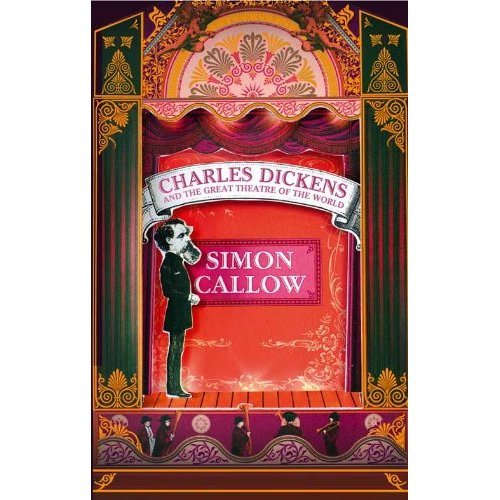
By Simon Callow
(Vintage)
In 1831, the 19-year-old Charles Dickens ― having long dreamed of a career on stage ― secured an audition at Covent Garden. But he came down with a cold on the appointed day, forcing him to request a postponement until the following season. By then, Dickens was a cub reporter, taking his first steps toward becoming the greatest English novelist.
As actor Simon Callow points out in his splendid “Charles Dickens and the Great Theatre of the World,” that doesn’t mean Dickens ever truly let go of his youthful dreams. “Literature was his wife, the theatre his mistress,” Callow writes, “and to the very end he was tempted to leave the one for the other.”
That story has been told before, from the early “The Life of Charles Dickens” by John Forster (1872-74) through recent landmark biographies by Peter Ackroyd (1990), Michael Slater (2009) and Claire Tomalin (2011). As Callow points out in his introduction, there also have been a number of books that directly analyze how theater influenced Dickens’ work.
But Callow’s perspective as a working actor ― one who has performed as Dickens on stage and television ― allows him to bring something new to the discussion, just as Jane Smiley’s insights as a writer enhanced her own biography of Dickens (2002).
Together, these two studies are not only among the shortest Dickens biographies, but also the two best introductions to what drove Dickens ― and, in turn, what gives his incomparable prose such ferocious energy.
Callow gets there by moving quickly through the day-to-day details of Dickens’ life, including his difficult childhood, his idealized relations with younger women, his increasingly troubled marriage, his crusading reformism and his “furious activity” ― “the antidote, though not the remedy,” Callow tells us, for Dickens’ perennial restlessness.
Callow also cruises through the novels, the better to spend time describing Dickens’ own intense involvement with theater, which included his detailed direction of and appearance in productions throughout England, as well as the exhausting series of public readings that would eventually kill him.
Callow’s book stands out because he not only chronicles what’s on stage but also peers behind the curtain, exploring the why and wherefore of “the histrionic imperative so deeply rooted in Dickens.” Here are three characteristically illuminating examples.
Linking Dickens’ own impulse to perform with what’s unique about his characters, Callow writes that “with Dickens, the reader is always conscious of his presence: the author is performing his characters ... brilliantly shaped with a view to the reader’s reactions. Even the descriptive passages have the quality of arias.”
Discussing Dickensian melodrama, Callow contends that Dickens makes “gold” of such “dross” because of his “intense and detailed connection with emotional truth as opposed to mere theatrical effect. ... When melodrama is taken as seriously as this, it can become overwhelming.”
Exactly right, as proven by subsequent writers ranging from Henry James to August Wilson.
Callow’s biography consistently makes clear how that emptiness spurred Dickens to create a theater of the world, populated by some of the most vivid characters who have ever lived ― on page or stage.
(MCT)
-
Articles by Korea Herald








![[Weekender] How DDP emerged as an icon of Seoul](http://res.heraldm.com/phpwas/restmb_idxmake.php?idx=644&simg=/content/image/2024/04/25/20240425050915_0.jpg&u=)
![[KH Explains] No more 'Michael' at Kakao Games](http://res.heraldm.com/phpwas/restmb_idxmake.php?idx=644&simg=/content/image/2024/04/28/20240428050183_0.jpg&u=20240428180321)









![[Herald Interview] Mistakes turn into blessings in street performance, director says](http://res.heraldm.com/phpwas/restmb_idxmake.php?idx=652&simg=/content/image/2024/04/28/20240428050150_0.jpg&u=20240428174656)
